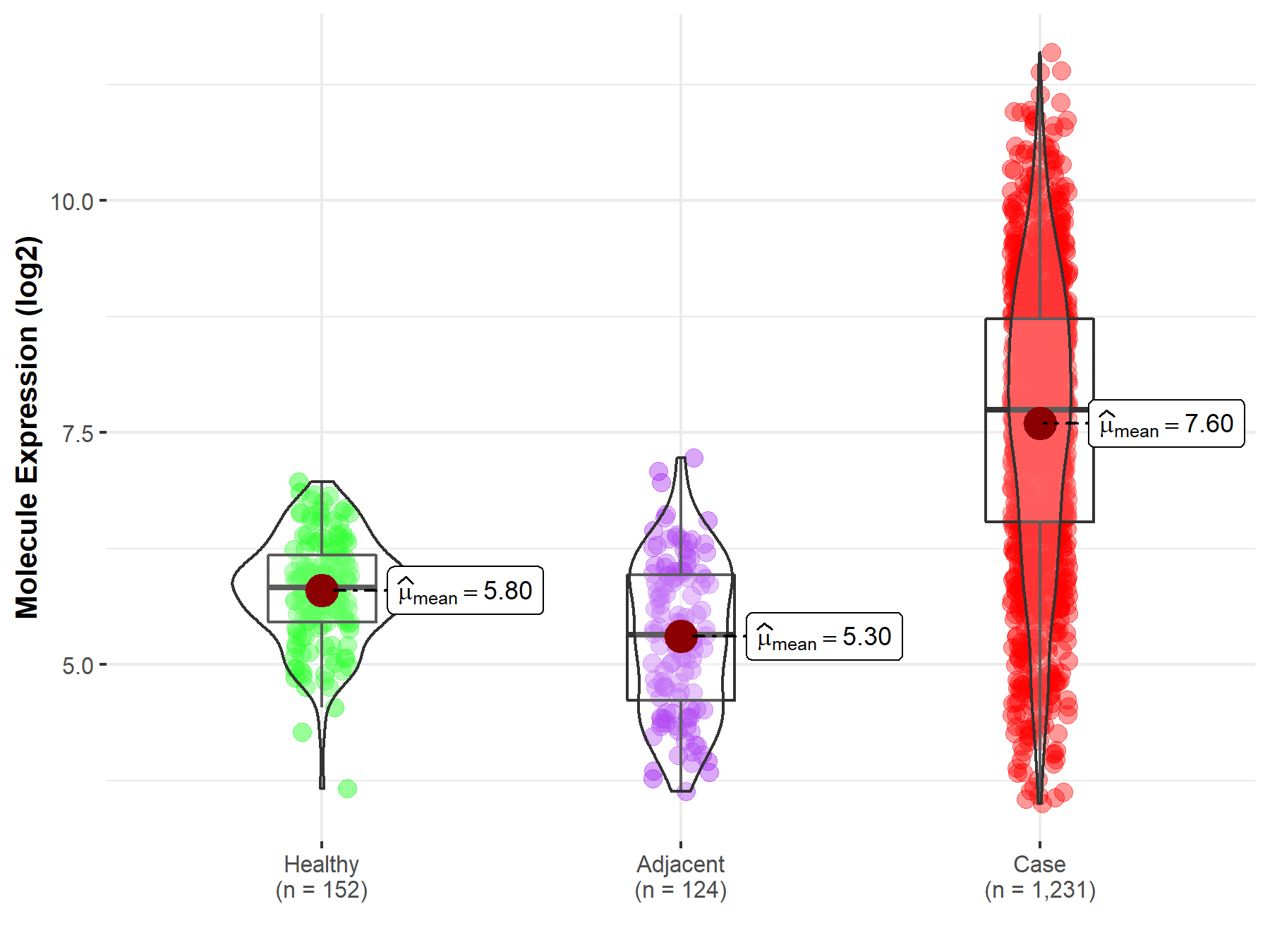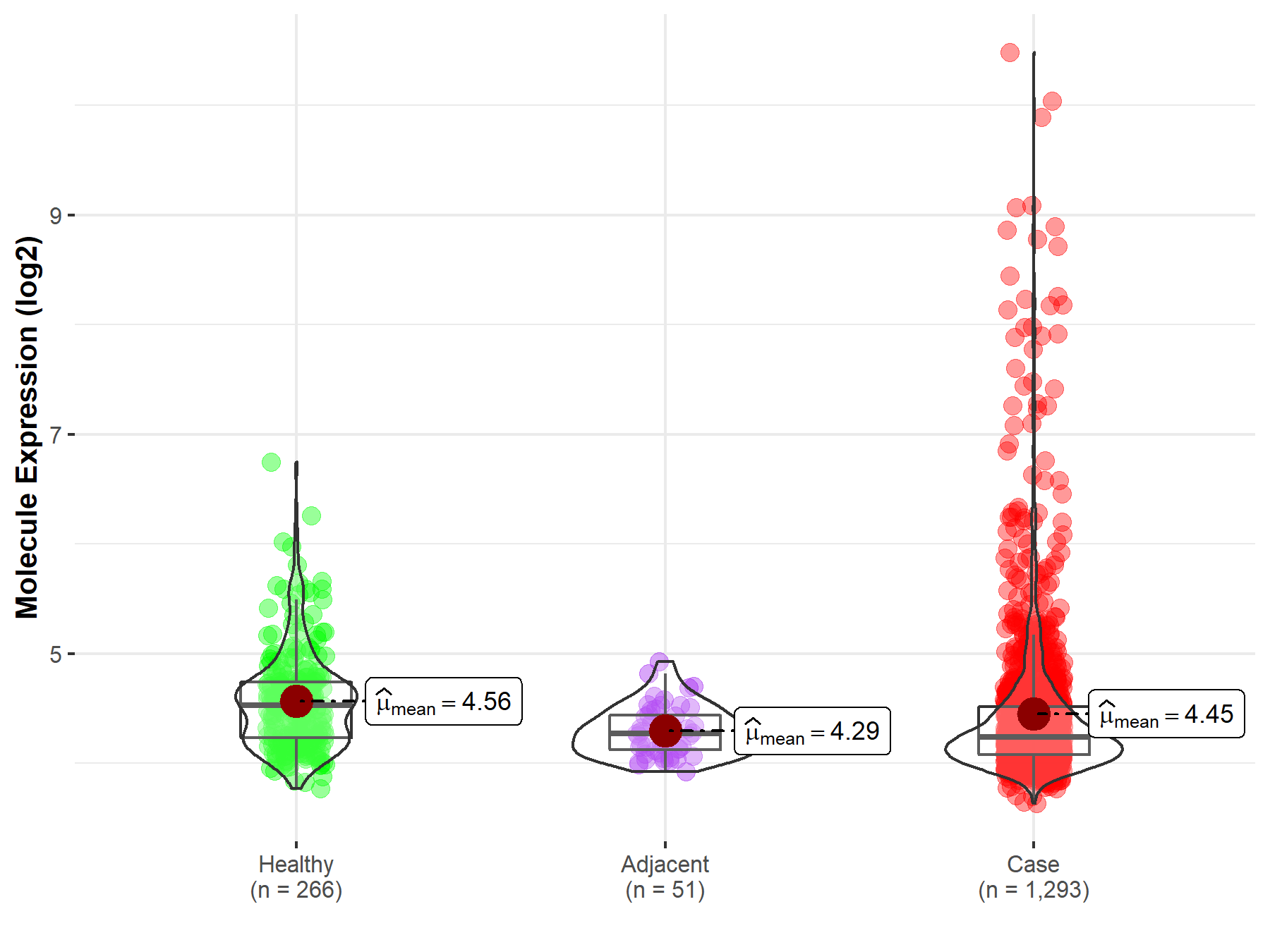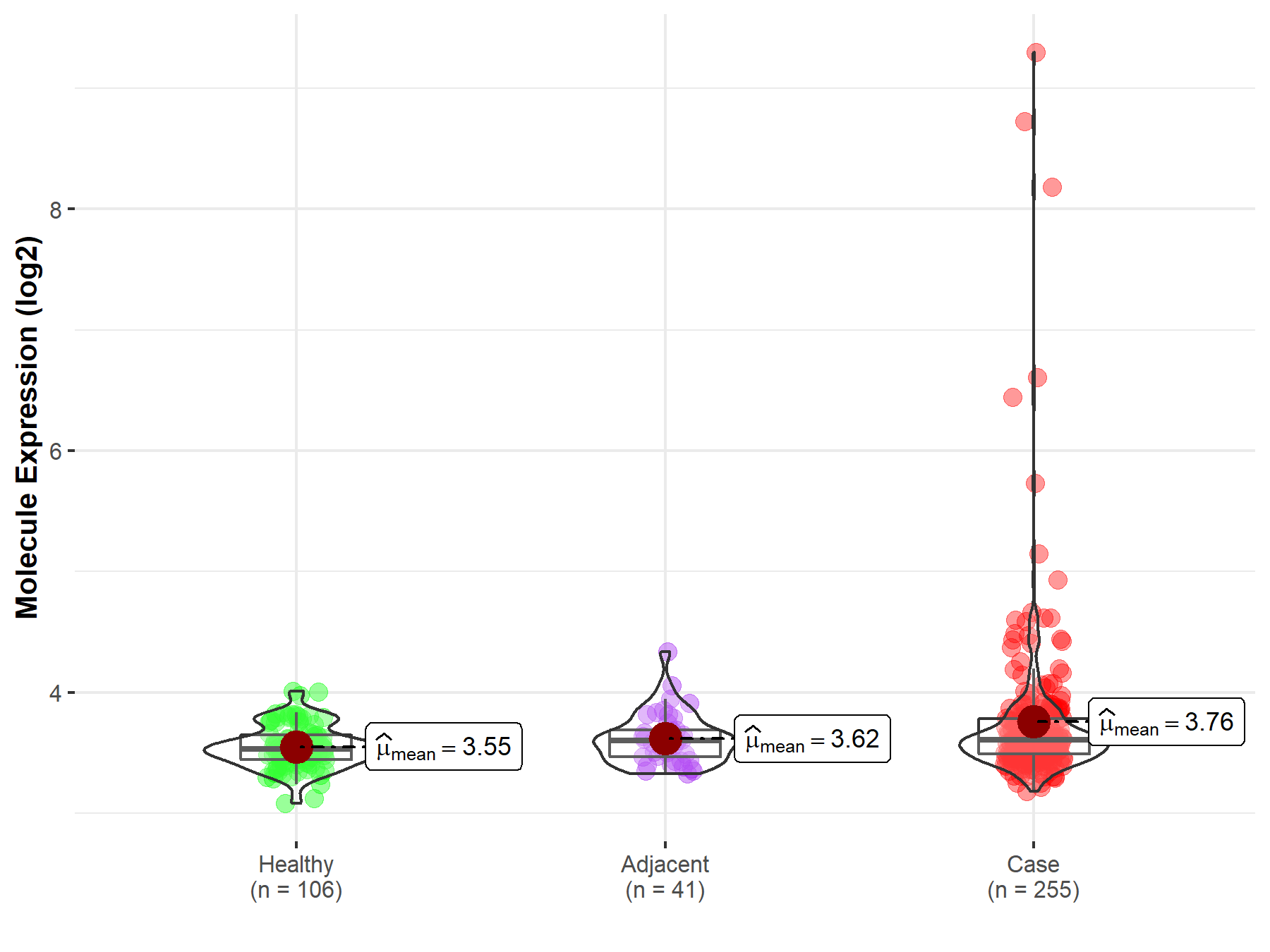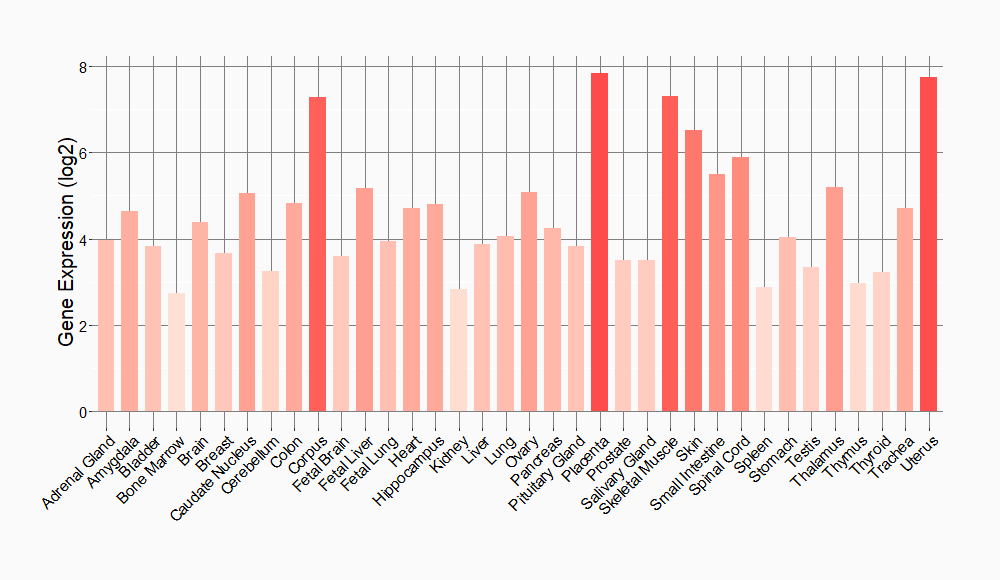Molecule Information
General Information of the Molecule (ID: Mol00474)
| Name |
Leucine-rich repeat-containing G-protein coupled receptor 5 (LGR5)
,Homo sapiens
|
||||
|---|---|---|---|---|---|
| Synonyms |
G-protein coupled receptor 49; G-protein coupled receptor 67; G-protein coupled receptor HG38; GPR49; GPR67
Click to Show/Hide
|
||||
| Molecule Type |
Protein
|
||||
| Gene Name |
LGR5
|
||||
| Gene ID | |||||
| Location |
chr12:71439798-71586310[+]
|
||||
| Sequence |
MDTSRLGVLLSLPVLLQLATGGSSPRSGVLLRGCPTHCHCEPDGRMLLRVDCSDLGLSEL
PSNLSVFTSYLDLSMNNISQLLPNPLPSLRFLEELRLAGNALTYIPKGAFTGLYSLKVLM LQNNQLRHVPTEALQNLRSLQSLRLDANHISYVPPSCFSGLHSLRHLWLDDNALTEIPVQ AFRSLSALQAMTLALNKIHHIPDYAFGNLSSLVVLHLHNNRIHSLGKKCFDGLHSLETLD LNYNNLDEFPTAIRTLSNLKELGFHSNNIRSIPEKAFVGNPSLITIHFYDNPIQFVGRSA FQHLPELRTLTLNGASQITEFPDLTGTANLESLTLTGAQISSLPQTVCNQLPNLQVLDLS YNLLEDLPSFSVCQKLQKIDLRHNEIYEIKVDTFQQLLSLRSLNLAWNKIAIIHPNAFST LPSLIKLDLSSNLLSSFPITGLHGLTHLKLTGNHALQSLISSENFPELKVIEMPYAYQCC AFGVCENAYKISNQWNKGDNSSMDDLHKKDAGMFQAQDERDLEDFLLDFEEDLKALHSVQ CSPSPGPFKPCEHLLDGWLIRIGVWTIAVLALTCNALVTSTVFRSPLYISPIKLLIGVIA AVNMLTGVSSAVLAGVDAFTFGSFARHGAWWENGVGCHVIGFLSIFASESSVFLLTLAAL ERGFSVKYSAKFETKAPFSSLKVIILLCALLALTMAAVPLLGGSKYGASPLCLPLPFGEP STMGYMVALILLNSLCFLMMTIAYTKLYCNLDKGDLENIWDCSMVKHIALLLFTNCILNC PVAFLSFSSLINLTFISPEVIKFILLVVVPLPACLNPLLYILFNPHFKEDLVSLRKQTYV WTRSKHPSLMSINSDDVEKQSCDSTQALVTFTSSSITYDLPPSSVPSPAYPVTESCHLSS VAFVPCL Click to Show/Hide
|
||||
| Function |
Receptor for R-spondins that potentiates the canonical Wnt signaling pathway and acts as a stem cell marker of the intestinal epithelium and the hair follicle. Upon binding to R-spondins (RSPO1, RSPO2, RSPO3 or RSPO4), associates with phosphorylated LRP6 and frizzled receptors that are activated by extracellular Wnt receptors, triggering the canonical Wnt signaling pathway to increase expression of target genes. In contrast to classical G-protein coupled receptors, does not activate heterotrimeric G-proteins to transduce the signal. Involved in the development and/or maintenance of the adult intestinal stem cells during postembryonic development.
Click to Show/Hide
|
||||
| Uniprot ID | |||||
| Ensembl ID | |||||
| HGNC ID | |||||
| Click to Show/Hide the Complete Species Lineage | |||||
Type(s) of Resistant Mechanism of This Molecule
Drug Resistance Data Categorized by Drug
Approved Drug(s)
3 drug(s) in total
| Drug Sensitivity Data Categorized by Their Corresponding Mechanisms | ||||
|
|
||||
| Disease Class: Breast cancer | [1] | |||
| Sensitive Disease | Breast cancer [ICD-11: 2C60.3] | |||
| Sensitive Drug | Docetaxel | |||
| Molecule Alteration | Expression | Down-regulation |
||
| Experimental Note | Revealed Based on the Cell Line Data | |||
| Cell Pathway Regulation | Cell apoptosis | Activation | hsa04210 | |
| Cell colony | Inhibition | hsa05200 | ||
| Cell proliferation | Inhibition | hsa05200 | ||
| Wnt/Beta-catenin signaling pathway | Inhibition | hsa04310 | ||
| In Vitro Model | MCF-7 cells | Breast | Homo sapiens (Human) | CVCL_0031 |
| MDA-MB-231 cells | Breast | Homo sapiens (Human) | CVCL_0062 | |
| ZR75-1 cells | Breast | Homo sapiens (Human) | CVCL_0588 | |
| BT549 cells | Breast | Homo sapiens (Human) | CVCL_1092 | |
| Experiment for Molecule Alteration |
Western blot analysis | |||
| Experiment for Drug Resistance |
CCK8 assay; Flow cytometry assay | |||
| Mechanism Description | Overexpressed miR-340-5p inhibited cell proliferation and drug resistance with increased apoptosis of breast cancer cells through down-regulating LGR5 expression via Wnt/beta-catenin pathway. | |||
| Drug Sensitivity Data Categorized by Their Corresponding Mechanisms | ||||
|
|
||||
| Disease Class: Colon cancer | [2] | |||
| Sensitive Disease | Colon cancer [ICD-11: 2B90.1] | |||
| Sensitive Drug | Fluorouracil | |||
| Molecule Alteration | Expression | Down-regulation |
||
| Experimental Note | Revealed Based on the Cell Line Data | |||
| In Vitro Model | CaCo2 cells | Colon | Homo sapiens (Human) | CVCL_0025 |
| SW1116 cells | Colon | Homo sapiens (Human) | CVCL_0544 | |
| In Vivo Model | HT-29 xenograft mouse model | Mus musculus | ||
| Experiment for Molecule Alteration |
Western blotting analysis | |||
| Experiment for Drug Resistance |
Annexin V assay | |||
| Mechanism Description | The miR-142-3p was markedly decreased in coloncancer specimens, in which it was negatively correlated withthe expression of CD133, Lgr5, and ABCG2. Transfection of miR-142-3p mimics in colon cancer cells downregulated cyclin D1expression, induced G1phase cell cycle arrest, and elevatedthe sensitivity of the cells to 5-fluorouracil. Furthermore,OCT4 suppressed miR-142-3p, and hypomethylation of theOCT4promoter was associated with a reduction in miR-142-3p. | |||
| Drug Sensitivity Data Categorized by Their Corresponding Mechanisms | ||||
|
|
||||
| Disease Class: Anaplastic thyroid cancer | [3] | |||
| Sensitive Disease | Anaplastic thyroid cancer [ICD-11: 2D10.2] | |||
| Sensitive Drug | Pyrvinium | |||
| Molecule Alteration | Expression | Up-regulation |
||
| Experimental Note | Revealed Based on the Cell Line Data | |||
| Cell Pathway Regulation | Wnt signaling pathway | Activation | hsa04310 | |
| In Vitro Model | LNCaP cells | Prostate | Homo sapiens (Human) | CVCL_0395 |
| HCT116 cells | Colon | Homo sapiens (Human) | CVCL_0291 | |
| Experiment for Molecule Alteration |
Western blotting analysis; ART sensitivity assay | |||
| Experiment for Drug Resistance |
CCK-8 cell proliferation assay; Flow cytometry | |||
| Mechanism Description | Pyrvinium pamoate can overcome artemisinin's resistance in anaplastic thyroid cancer. The resistance of CAL-62 to ART was related to the upregulation of the WNT signaling pathway. | |||
Disease- and Tissue-specific Abundances of This Molecule
ICD Disease Classification 02

| Differential expression of molecule in resistant diseases | ||
| The Studied Tissue | Colon | |
| The Specified Disease | Colon cancer | |
| The Expression Level of Disease Section Compare with the Healthy Individual Tissue | p-value: 3.64E-105; Fold-change: 1.92E+00; Z-score: 3.36E+00 | |
| The Expression Level of Disease Section Compare with the Adjacent Tissue | p-value: 3.91E-72; Fold-change: 2.42E+00; Z-score: 2.96E+00 | |
|
Molecule expression in the normal tissue adjacent to the diseased tissue of patients
Molecule expression in the diseased tissue of patients
Molecule expression in the normal tissue of healthy individuals
|
||
| Disease-specific Molecule Abundances |

|
Click to View the Clearer Original Diagram |
| Differential expression of molecule in resistant diseases | ||
| The Studied Tissue | Breast tissue | |
| The Specified Disease | Breast cancer | |
| The Expression Level of Disease Section Compare with the Healthy Individual Tissue | p-value: 1.02E-03; Fold-change: -2.90E-01; Z-score: -6.54E-01 | |
| The Expression Level of Disease Section Compare with the Adjacent Tissue | p-value: 7.47E-05; Fold-change: -3.30E-02; Z-score: -1.45E-01 | |
|
Molecule expression in the normal tissue adjacent to the diseased tissue of patients
Molecule expression in the diseased tissue of patients
Molecule expression in the normal tissue of healthy individuals
|
||
| Disease-specific Molecule Abundances |

|
Click to View the Clearer Original Diagram |
| Differential expression of molecule in resistant diseases | ||
| The Studied Tissue | Thyroid | |
| The Specified Disease | Thyroid cancer | |
| The Expression Level of Disease Section Compare with the Healthy Individual Tissue | p-value: 1.08E-05; Fold-change: 7.66E-02; Z-score: 4.37E-01 | |
| The Expression Level of Disease Section Compare with the Adjacent Tissue | p-value: 1.03E-02; Fold-change: 5.97E-03; Z-score: 2.82E-02 | |
|
Molecule expression in the normal tissue adjacent to the diseased tissue of patients
Molecule expression in the diseased tissue of patients
Molecule expression in the normal tissue of healthy individuals
|
||
| Disease-specific Molecule Abundances |

|
Click to View the Clearer Original Diagram |
Tissue-specific Molecule Abundances in Healthy Individuals


|
||
References
If you find any error in data or bug in web service, please kindly report it to Dr. Sun and Dr. Zhang.
